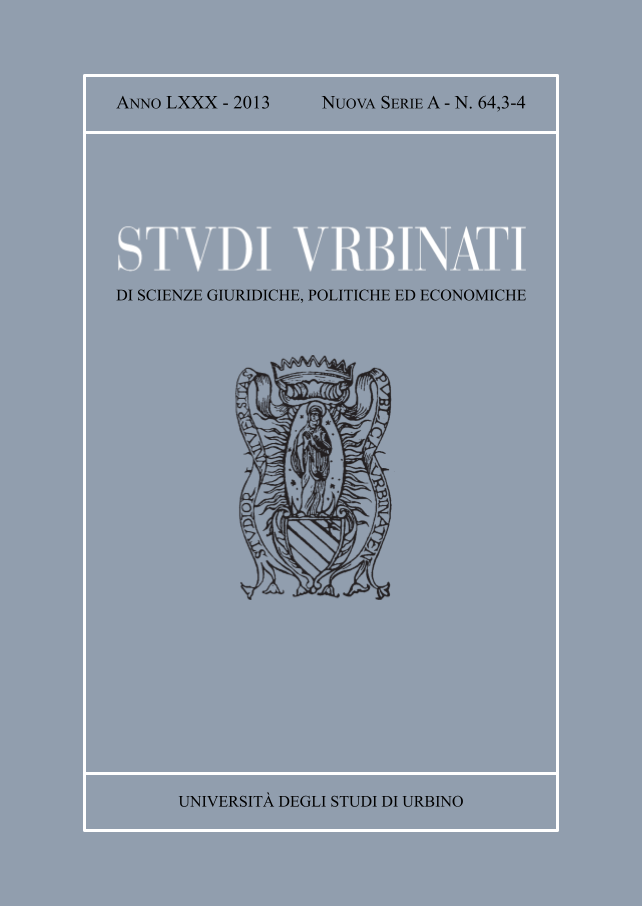Abstract
Through a reading (also conducted only on epigraphs and descriptions of the index) of documents relating to the old “Collegio dei Dottori” of Urbino (found and available in various locations, published and unpublished, already transcribed and not, supplemented by an essential apparatus of essential notes), it provides a record of the events that have marked the history and daily life of this historic institution, from 1506, the date of its formalization by Guidobaldo II as a judicial body.
It brings to light the two “souls” of the old “Collegio dei Dottori”, the administration of justice and that of legal education and “university” teaching, combined, yet distincted, with a single membership. Until you find a documentation of Resolutions of the General Board (or Rotale), next to the notary Minutes of the historic Congregation of Studies.
Attraverso una lettura (condotta anche solo sulle epigrafi e descrizioni dell’indice) dei documenti relativi all’antico Collegio dei Dottori di Urbino (reperiti e reperibili in varie sedi, editi ed inediti, già trascritti e non, integrati da un essenziale apparato di note essenziali), si offre una traccia delle vicende che hanno segnato la storia e la quotidianità di questa storica istituzione a partire dalla data, il 1506, della sua ufficializzazione ad opera di Guidubaldo II come organo giudicante. Si pongono così in luce le due “anime” del Collegio dei Dottori, quella dell’amministrazione della giustizia e quella della formazione giuridica e dell’insegnamento “universitario”, riunite, eppur distinte, in unica appartenenza. Fino ad individuare una documentazione di Risoluzioni di un Collegio Generale (o Rotale) accanto ai Verbali notarili della storica Congregazione degli Studi.
L'opera è pubblicata sotto Licenza Creative Commons Attribuzione 4.0 Internazionale (CC-BY)

